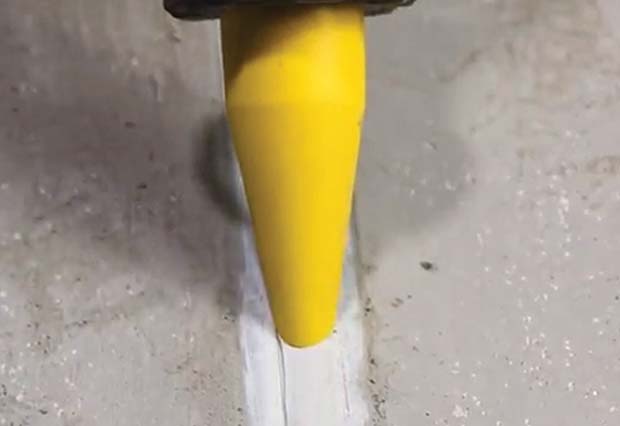Tom Hancock of Permaban, part of RCR, answers this common question.

Sealing joints in a concrete floor is beneficial, although to get the best results it is important to seal the joint at the right time, and choose the right product.
Why joint gaps occur
When concrete shrinkage occurs, armoured contraction joints and saw cut joints will open, with varying degrees of movement. This will depend on the slab construction method, floor use and temperature extremes. The result could be a joint opening of just a few millimetres, or as much as 40mm; and a gap will be left in the floor.
Filling these gaps with a suitable joint sealant is a personal choice, and usually this would be discussed between the building owner and the structural engineer.
The right time to seal a joint
As a rough guide, every 1mm of concrete thickness installed will need 1 day of drying-out time. So for a 200mm floor slab you could be looking at up to about 12 months before drying out and the majority of shrinkage has occurred and an accurate joint width has been established. If you seal the joint before that time then it may need to be re-sealed later.
Choosing the best sealant
There is a choice of soft and harder compounds available.
Installing a hard compound joint sealant too soon after the slab construction could result in the sealant failing if the slab is still continuing to move. If the building owner insists that a sealant must be used, then a softer compound sealant can be installed – though commonly this is seen as a sacrificial sealant, and often would need to be replaced by a harder compound after the drying-out period.
For older slabs that require joint sealant or repairs, harder sealant compounds are commonly used, as the slabs are thoroughly dry and there is virtually no slab movement.
Protecting against debris, impact and contaminants
Sealing a joint also eliminates the issue of debris getting between the joint, and contaminants entering the ground through the joint.
Most importantly though it provides impact protection from wheeled materials handling equipment: the wheels drop into the joint gap while running across it perpendicular to the joint, causing impact damage.
However, there are armoured joints on the market that are impact-free or ‘disruptive face’ joints, such as Permaban’s Signature joint. With these the need for a joint sealant is negligible, as the wheeled traffic passing over the joint line cause no impact. The only benefit of a sealant in this case would be to stop debris or contaminants falling between the joint lines.




Comments are closed.